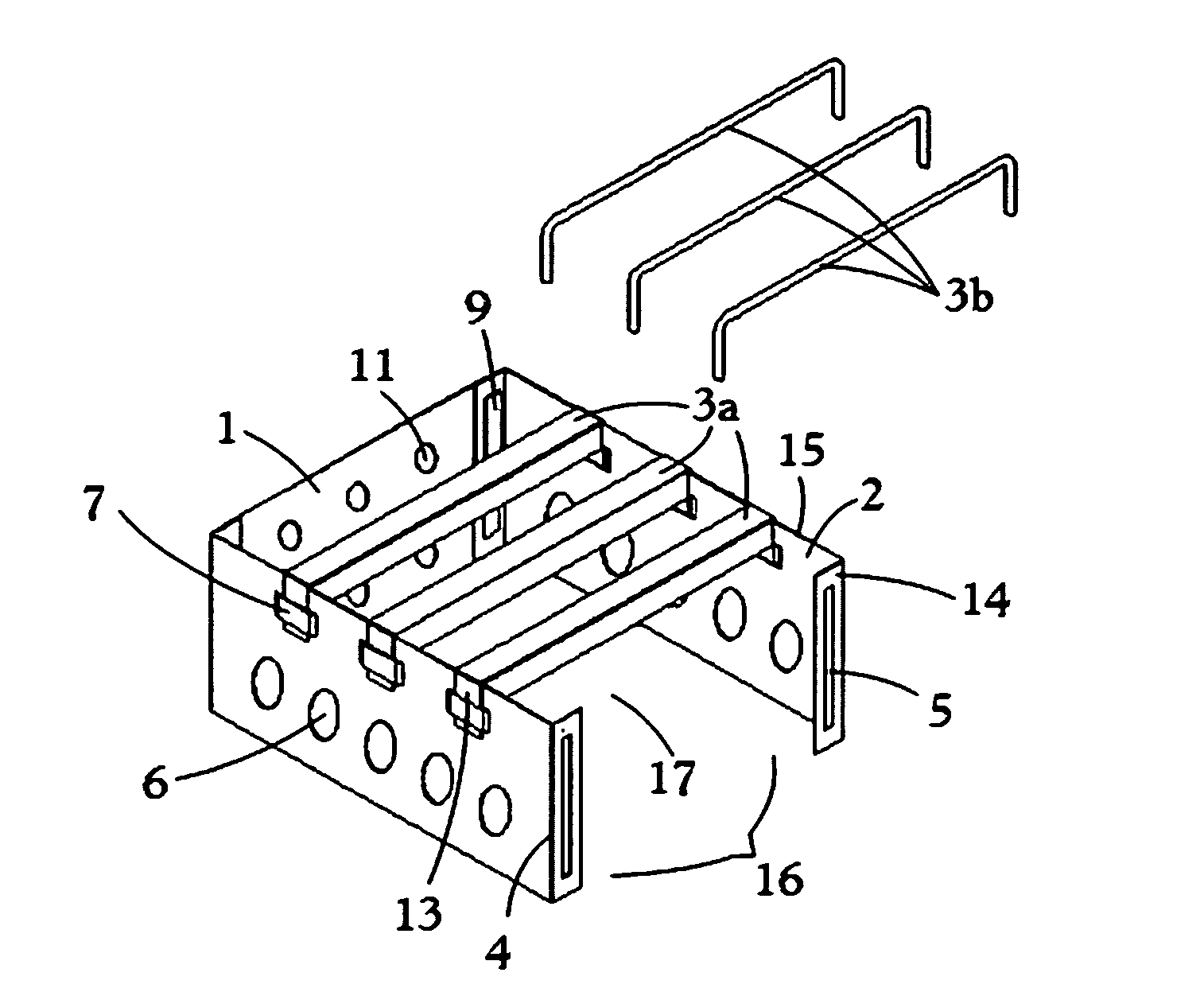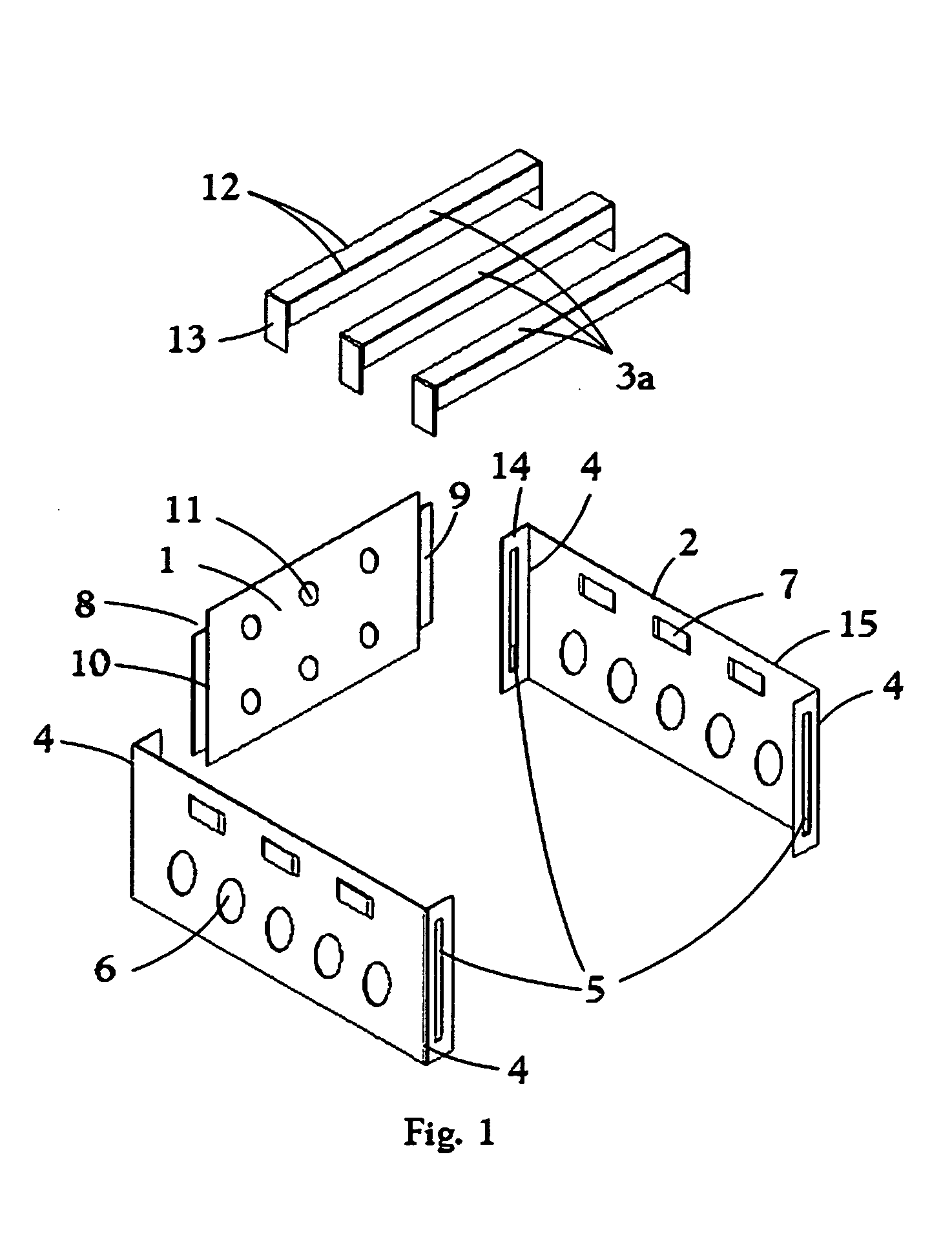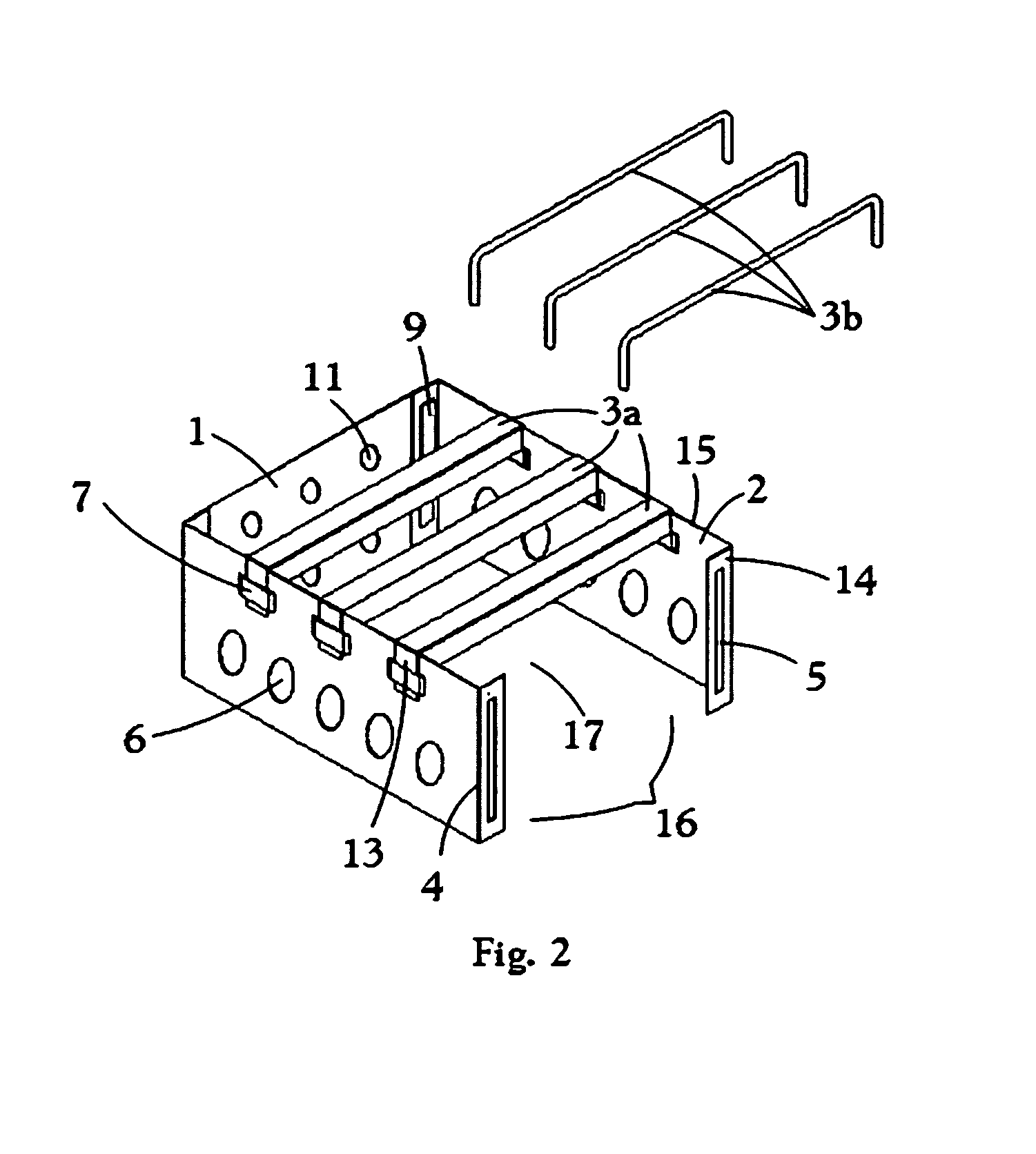Most backpacking stoves strive to minimize weight often at the cost of maintaining stability.
This can create dangerous conditions for using these stoves in the uneven surfaces found in outdoor environments.
This fuel often leaks or spills spoiling soils and water runoff, not to mention other items in a backpack.
The added weight and cost of the fuel are also marked drawbacks.
When manufactured to backpacking scale, the opening for feeding fuel to the fire is limiting, and there are inadequate air holes to allow for sustained
combustion.
Additionally, the cross bars on which one would set a pan create an uneven surface causing
instability of the pan.
When manufactured to backpacking scale, this stove has inadequate openings for feeding the fuel.
Additionally, the reduced top surface and height of the apparatus create
instability.
Hinges used to fasten the various parts of the stove add weight to the stove, and create a possible design failure point.
The only way to feed the fuel during use is to remove the cooking pan and feed directly into the flames from above creating potentiality for burns and spills.
Uneven ground could cause one piece to be raised in relation to its adjoining piece potentially releasing the tab-fastening mechanism resulting in failure of the stability and structure of the device.
The only way to feed the fuel during use is to remove the cooking pan and feed fuel directly into the flames from above creating potentiality for burns and spills.
The stove has very little ventilation to allow for
airflow necessary to sustain
combustion of foraged fuels.
The stove folds with a
system of hinges and wires that add weight to the device and may prove to be possible failure points.
This stove has inadequate openings for feeding the fuel.
While functionality with canned heat may be good, it is clearly not designed for use with foraged fuels, and lacks the light weight desired for backpacking.
It is formed via a
system of bends, and folded sleeves which could be easily bent and damages causing the device not to assemble.
Depending on the gauge of sheet
metal used, the stove may either prove too weak for heavy cooking loads, or excessively heavy for carrying.
Having both ends open increases the danger of combusting materials escaping the burning chamber, especially when used in high wind conditions.
The resulting cooking “surface” requires balancing a pan on the folded sides of the device limiting the sizes of pans that can be used in this configuration and creating challenges to the stability of the stove.
The only way to feed the fuel during use is to remove the cooking pan and feed directly into the flames from above creating potentiality for burns and spills.
If used in the inverted configuration, there is no way to feed the fuel without lifting the entire apparatus from the ground allowing the combusting fuels to potentially scatter.
The combustion area is insufficient for most foraged fuels, and the openings for supplying air to the combusting material are very limited.
The only way to feed the fuel during use is to remove the cooking pan and feed directly into the flames from above creating potentiality for burns and spills.
The slender profile and required stacking of the various parts detract from the unit's stability.
The fourth side of the device, along with the addition of the fuel grate and ash pan, increase the weight of the stove unnecessarily.
There is no cooking grate or surface requiring the balancing of a pan or skewers on the edges of the sides, increasing
instability.
The only way to feed the fuel during use is to remove the cooking pan and feed directly into the flames from above creating potentiality for burns and spills.
The higher-than-wide profile of this stove creates instability.
The only way to feed the fuel during use is to remove the cooking pan and feed directly into the flames from above creating potentiality for burns and spills.
When collapsed for
stowage, the stove is still quite large and curved.
This exposes the
soot-covered inside of the device to soil sleeping gear.
Inner sleeves in the air intake area allow for variable
airflow to the combusting material, but add weight to the device and potentiality for jamming on fuel or the device itself.
The high, narrow profile of the device could make it unstable on uneven ground.
There is no adequate opening to feed the fire during use, so one would likely need to remove the pan and feed the fire from above risking spills and burns.
Additionally, the fire grate, legs, tubing and high walls add unnecessary weight to the device further reducing its portability.
However, all but one, are not designed to collapse into a compact unit conducive the requirements of backpacking.
Additionally, while flat, it is still quite large.
The device offers a variety of mechanisms to raise the
combustion chamber from the soil, but they are subject to penetrating soft soils limiting air flow to the
combustion chamber and creating instability.
The variation of the device that allows for baking is neither light nor compact enough for practical backpacking applications.
The high, narrow profile of the unit creates instability.
In the “backpacking” version of the stove, the only way to feed the fuel during use is to remove the cooking pan and feed directly into the flames from above creating potentiality for burns and spills.
 Login to View More
Login to View More  Login to View More
Login to View More 


